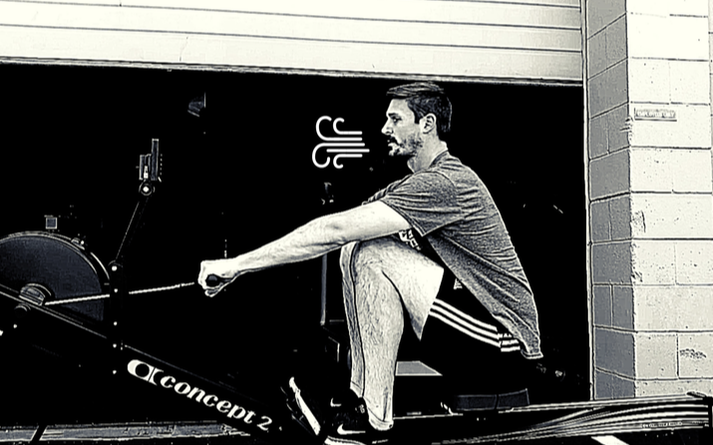"These breathing strategies quickly teach you how your breath can control your mind and your heart rate, a skill that's very beneficial on race day". Why Different Breathing Patterns?Our body is amazing in that we have many automatic functions that keep us alive such as respiration and cardiac function. Without these automatic functions we wouldn't be able to sleep without risking death. Think about it, if we had to consciously think about inhaling and exhaling as soon as we fell asleep we would stop breathing and die shortly after. Thankfully that isn't our reality but I make that point because breathing is the only automatic function in our body that we can control when we want to. Breathing is powerful. Breathing keeps us alive, delivers oxygen to our lungs and working muscles, but what's just as powerful is the fact that we can also take control of our breathing to relax our mind and body, pace ourselves through races, and enhance our rowing performance. Below are three breathing strategies that I use with my clients and in my own training. They are all supported by research, and very helpful in the training process. These breathing strategies quickly teach you how your breath can control your mind and your heart rate, a skill that's very beneficial on race day. Nasal Only BreathingBelieve it or not, nasal breathing actually delivers 10-20% more oxygen to your working muscles and speeds your recovery when compared to mouth breathing. When it comes to the long list of benefits that's barely scratching the surface. To learn much more I highly recommend "Breath" by James Nestor and "The Oxygen Advantage" by Patrick McKeown. How: Inhale and exhale through the nose only Why: Learn how to control your mind and body with your breathing, increase oxygen delivery and carbon dioxide tolerance. Intensity: Low Rate: 16-20 1:1 BreathingResearch conducted on 31 junior rowers (11 male, 20 female) found that the group that trained with the 1:1 breathing strategy showed a significant increase in tidal volume (lung capacity) during the first half of a 2K race (1). An increase in lung capacity allows us to consume more air with each breath. This increase may prove to have a significant impact on rowing performance. However, it is nearly impossible to hold a 1:1 ratio during a race like effort so I only recommend using this for low intensity training. How: Inhale on the recovery, exhale on the drive Why: Learn to control and time your breathing to match your stroke, improve tidal volume (lung capacity) Intensity: Low/As high as tolerated Rate: 20-24 1:1 Shh BreathingMaking a sound as you exhale on the drive naturally engages your core, wrapping your spine with support (which should help you transfer more force into the oar handle while simultaneously protecting your spine). The sound can also be used as an audio cue to improve acceleration and timing. Shout-out to Anderson Bourell for teaching me this strategy. How: Inhale on the recovery, exhale with a forceful shh sound on the drive Why: Engages the core, improves acceleration and timing Intensity: As high as tolerated Rate: 24-28 Special Notes:DON'T over do it! Avoid pushing these breathing patterns to extremes. It's ok to challenge yourself but when you need to break the specific breathing pattern please do so and/or lighten up your intensity. I use these breathing strategies during training to challenge my clients in new and different ways. When race day or test pieces come around I don't have them think about their breathing. At that point they should naturally use the most effective breathing pattern for them in that moment (which changes throughout the race). Requiring them to use any of these for the duration of a race WILL most likely make them slower. Cheers to better breathing!References/Book Recommendations:1) Webster, A., Penkman, M., Syrotuik, D., Gervais, P., Cruz, L., Bell, G. (2010). Effect of training com- bined with different breathing entrainment patterns on physiological adaptations during rowing exercise. Advances in Exercise & Sports Physiology, 16(1), 15-23.
Book recommendations: Breath by James Nestor The Oxygen Advantage by Patrick McKeown
0 Comments
Leave a Reply. |
Author
Blake Gourley holds a Masters of Science in Sports Performance Training and has over 12+ years of experience working with rowers. Read more Categories
All
Archives
August 2023
|

 RSS Feed
RSS Feed